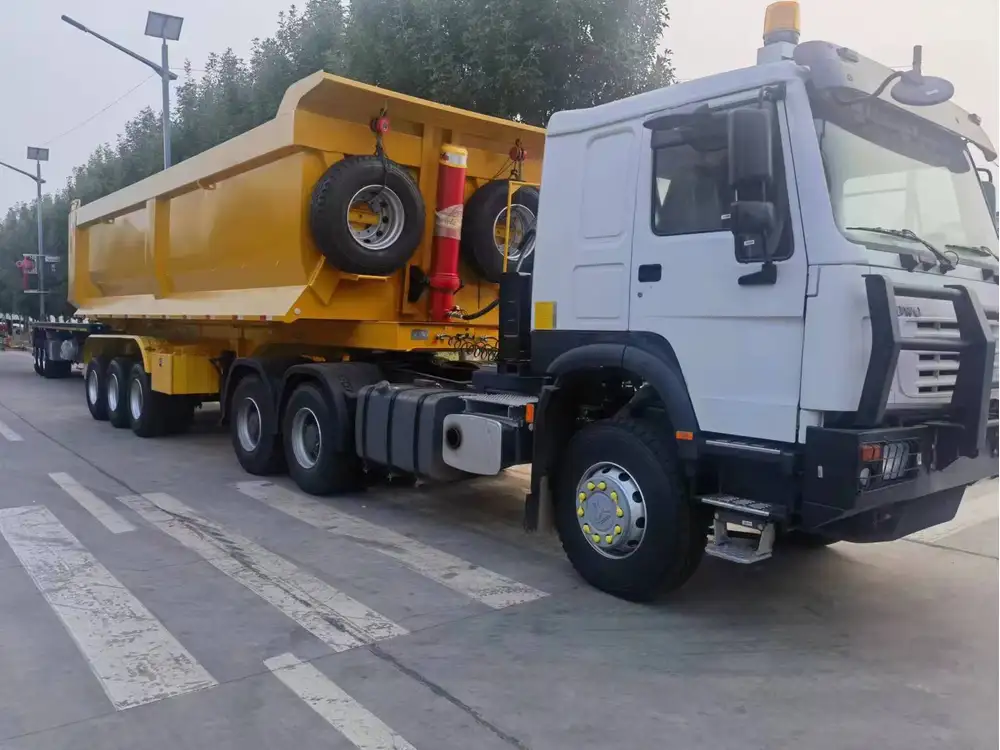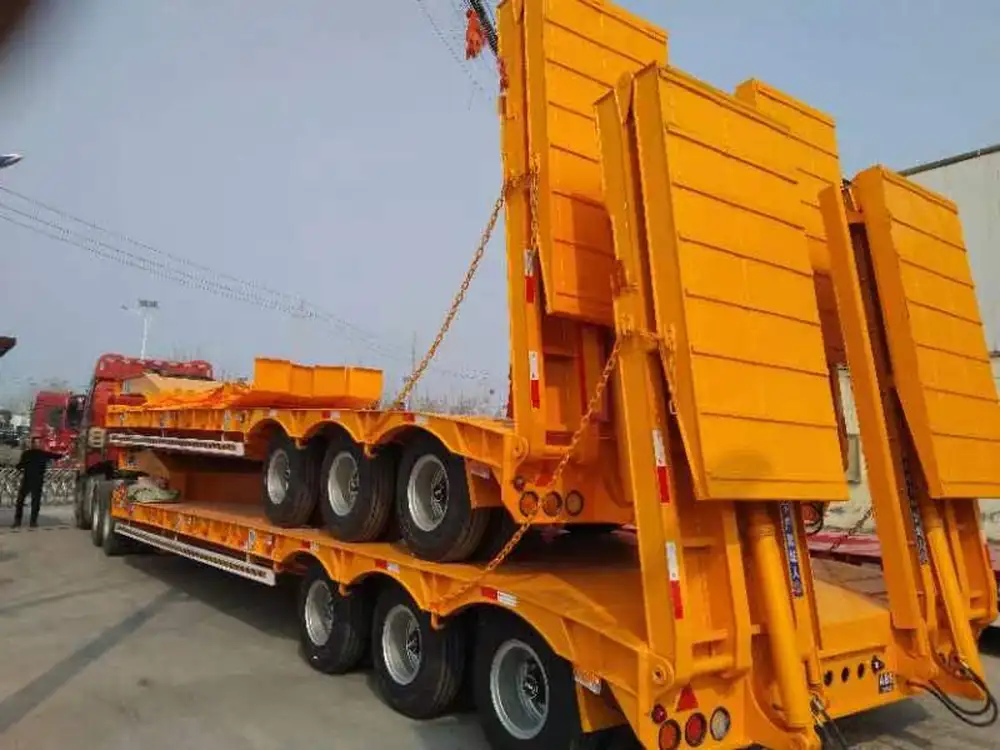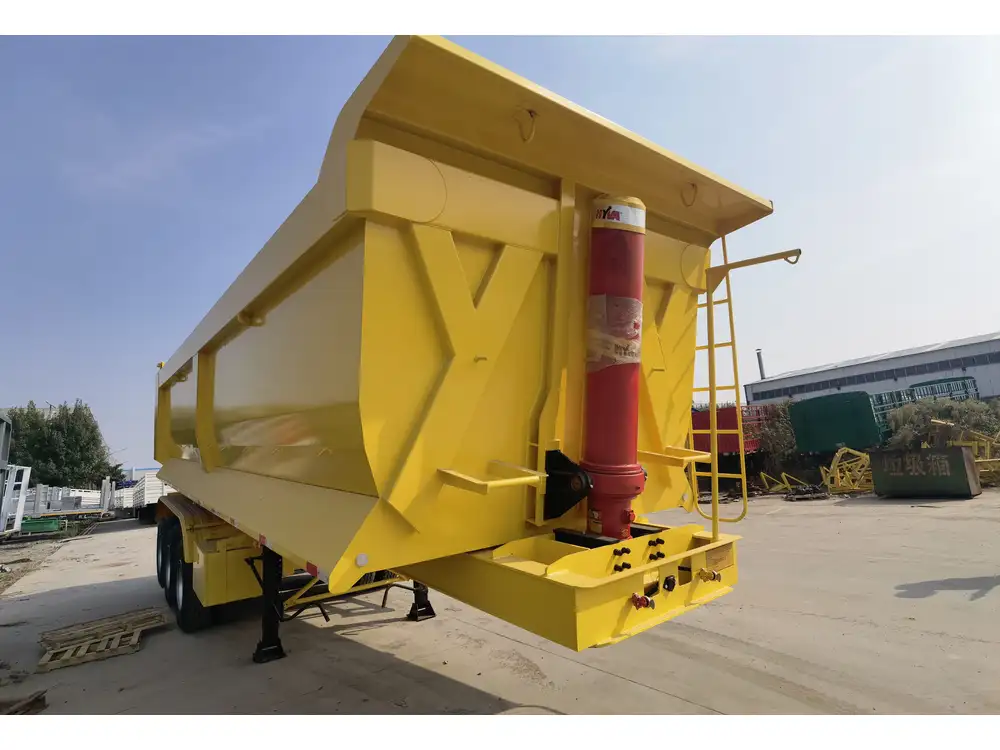In the world of transportation and logistics, understanding the various types of trailers is crucial for businesses looking to optimize their shipping processes. Among the most versatile and widely used trailers is the flatbed trailer. This article delves deep into flatbed trailers, exploring their designs, functionalities, advantages, and ideal applications, ensuring you have comprehensive insights to enhance your decision-making in the industry.
What is a Flatbed Trailer?
A flatbed trailer is a type of trailer characterized by its flat, open platform that is entirely devoid of sides or a roof. This design facilitates the easy loading and unloading of cargo from any side, making it an incredibly practical choice for transporting a diverse array of goods. The simplicity of its structure is both its strength and its utility, capable of accommodating items of varying shapes, sizes, and weights.
Key Components of a Flatbed Trailer
Understanding the components of a flatbed trailer allows for a better appreciation of its functionality:
| Component | Description |
|---|---|
| Deck | The flat surface where cargo is placed, often made from steel or aluminum. |
| Axles | Typically varies from 1 to 5 axles, providing stability and weight distribution. |
| Kingpin | The coupling point between the trailer and the tractor unit. |
| Landing Gear | Scissor-like supports that stabilize the trailer when not attached to a vehicle. |
| Tie-down Points | Locations for securing the cargo, often equipped with D-rings or stake pockets. |

Types of Flatbed Trailers
Flatbed trailers come in various designs, each tailored for specific uses. Here are some common types:
- Standard Flatbed Trailer: Ideal for typical freight, possessing none of the sides or enclosures, making it versatile.
- Step Deck Trailer: Features a lower deck that accommodates taller loads which might exceed height restrictions.
- Double Drop Trailer: Offers two lower deck sections, suitable for transporting heavy machinery or oversized cargo.
- Flatbed Conestoga Trailer: A hybrid design that includes a rolling tarp system, providing some protection while maintaining flatbed functionality.
Advantages of Using a Flatbed Trailer
Flatbed trailers hold significant advantages, positioning them as a staple in the logistics industry. Here’s a detailed examination:
1. Versatility
Flatbed trailers can haul a broad spectrum of cargo, from lumber and construction materials to heavy machinery and even specialized vehicles. This versatility reduces the need for multiple trailer types in a fleet.

2. Easy Loading and Unloading
The open design allows for loading and unloading from all sides, which is particularly beneficial in busy environments or when dealing with bulky items that require equipment like cranes or forklifts.
3. Cost-Effective
Transportation costs may decrease due to the ability to accommodate larger shipments. Flatbed trailers often require less maintenance compared to enclosed trailers, further elevating their cost-effectiveness.
4. Increased Availability of Cargo Securement Options
Flatbed trailers typically come equipped with multiple tie-down points, allowing for a secure and stable transport of various cargo types. Ratchet straps, chains, and tarps provide flexibility in securing the load.

5. Accommodating Large and Oversized Loads
Flatbeds are particularly advantageous for transporting large or oversized items that don’t fit into a standard enclosed trailer, thus broadening operational capabilities.
Common Applications of Flatbed Trailers
Flatbed trailers excel in numerous industries. Their adaptability leads to applications across the board:
- Construction: Transporting scaffolding, cement, and heavy machinery.
- Agriculture: Hauling large equipment and agricultural produce.
- Lumber: Carrying timber and related materials from forests to production sites.
- Automotive: Transporting vehicles, especially those being shipped for sale or repairs.
- Heavy Equipment: Moving construction equipment and machinery that cannot be disassembled.
Safety Considerations with Flatbed Trailers
While flatbed trailers boast a plethora of advantages, certain safety considerations should not be overlooked:

1. Proper Load Securement
Utilizing sufficient tie-down methods is essential to prevent cargo from shifting during transport, which could lead to accidents or lost loads.
2. Weight Distribution
Evenly distributing weight across the trailer is crucial to maintain stability and prevent roll-overs. Overloading on one side can result in hazardous driving conditions.
3. Visibility and Marking
Ensuring that the cargo has adequate visibility, especially if it protrudes from the trailer, is vital. Load markings and flags can enhance safety during transport.

4. Regular Maintenance Checks
Conducting routine inspections of the trailer, including brakes, lights, tires, and structural integrity, assures safe operations and prolongs the trailer’s lifespan.
Choosing the Right Flatbed Trailer for Your Needs
Selecting the appropriate flatbed trailer for your specific requirements can make a significant difference in your operational efficiency. To guide your decision:
Considerations for Selection
| Factor | Considerations |
|---|---|
| Load Type | Identify the nature and weight of the cargo. |
| Weight Ratings | Match the trailer’s load capacity with the cargo demands. |
| Trailer Dimensions | Ensure it fits in the intended loading and unloading areas. |
| Local Regulations | Check for height, width, and weight restrictions in your transport route. |
| Frequency of Use | Determine whether you need a specialized trailer or a general-purpose one. |

Additional Tips
- Seek Experienced Manufacturers: Collaborating with a reputable trailer manufacturer guarantees high-quality equipment tailored to your needs.
- Evaluate Resale Value: Consider the potential resale value of the trailer depending on its design and durability.
- Investigate Customization Options: Many manufacturers offer customization to suit specific cargo types, enhancing functionality.
Maintenance and Care of Flatbed Trailers
For optimal performance and longevity, regular maintenance of flatbed trailers is essential. Here’s a comprehensive maintenance guide:
Regular Inspection Checklist
- Deck Integrity: Inspect for cracks, rust, or wear and tear.
- Axles and Suspension: Look for signs of damage or excessive wear.
- Tires: Check tread depth, pressure, and any signs of bulging or cracking.
- Brakes and Lights: Ensure proper functionality for safety during transport.
- Tie-Downs: Assess the condition of all tie-down points and straps.

Seasonal Maintenance Tips
- Winter: Ensure proper antifreeze levels and inspect tires for winter conditions.
- Summer: Regularly check tire pressure, as heat can cause expansion and potential blowouts.
- Rainy Seasons: Inspect for corrosion and damage from water exposure.
Conclusion
In today’s dynamic transportation sector, flatbed trailers stand out as an indispensable tool for many logistics operations. Their unique design and versatility cater to a wide range of cargo types, making them a preferred choice for transporting everything from machinery to building materials. To maximize the effectiveness of flatbed trailers, it is essential to understand their components, advantages, safety considerations, and maintenance requirements. By choosing the right trailer and ensuring it is well-maintained, businesses can enhance their operational efficiency and improve their bottom line.
Knowing all this, we trust that this guide empowers you with the detailed insights necessary for making informed decisions regarding flatbed trailers, paving the way for improved logistics and transportation strategies.



